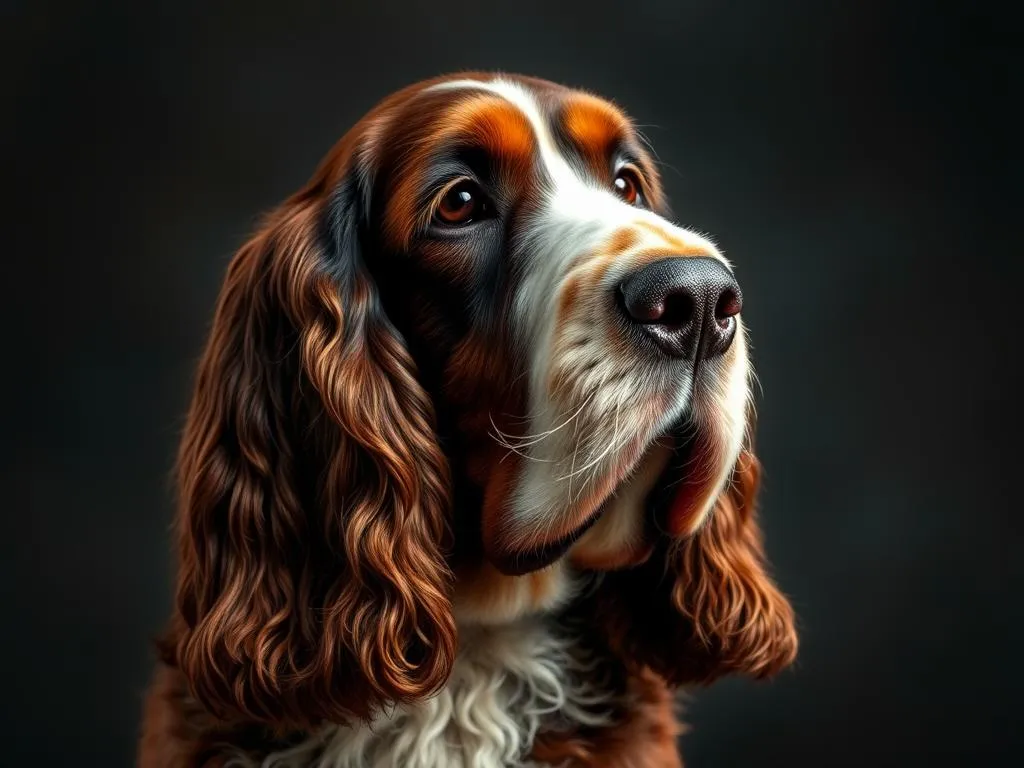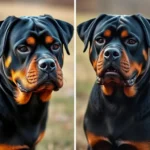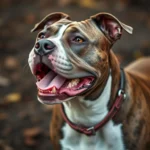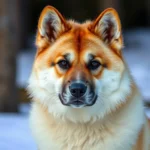
Overview of Grand Basset Griffon Vendeen
History and Origin
The Grand Basset Griffon Vendeen (GBGV) hails from France, specifically from the Vendee region, where it was developed for hunting small game such as rabbits and deer. This breed emerged in the late 19th century as a result of the need for a medium-sized hunting dog that could effectively traverse the dense underbrush typical of its native terrain. The GBGV is recognized for its keen sense of smell, agility, and determination, which made it a reliable companion for hunters.
Historically, the GBGV was bred as a companion and hunting dog, showcasing a strong work ethic and an ability to endure long hours in the field. Over time, this breed garnered recognition from various kennel clubs, including the American Kennel Club (AKC), which further solidified its status as a beloved breed among enthusiasts and hunting aficionados alike.
Physical Characteristics
The Grand Basset Griffon Vendeen typically stands between 14 to 15 inches tall at the shoulder and weighs around 40 to 50 pounds. This breed possesses a distinctive appearance characterized by its long, wiry coat, which can come in various colors, including tricolor, orange and white, or grizzle and tan.
One of the GBGV’s most notable features is its long, droopy ears, which are both adorable and functional, helping to funnel scents toward its sensitive nose. Additionally, the breed has a robust build with a strong neck, a deep chest, and a slightly curved tail, which is often seen wagging in excitement.
However, potential owners should be aware of some common health issues associated with the GBGV’s physical traits, including hip dysplasia, ear infections, and obesity due to their propensity for gaining weight if not properly managed.
Temperament and Behavior
Personality Traits
The Grand Basset Griffon Vendeen is known for its friendly and playful demeanor. This breed is sociable and tends to get along well with families, children, and other pets, making it an excellent companion for households of various sizes. GBGVs are independent-minded, which can sometimes translate into a stubborn streak; however, they are also affectionate and enjoy spending time with their human family members.
In comparison to other similar breeds, such as the Basset Hound, the GBGV is generally more energetic and playful, making it a better fit for active families. Their curious nature and eagerness to explore can lead to some mischief if not adequately supervised, but their charming personality often makes up for any trouble they might cause.
Socialization and Training
Early socialization is crucial for the Grand Basset Griffon Vendeen to develop into a well-rounded adult dog. Exposing them to various environments, people, and other animals can help mitigate any potential behavioral issues down the road.
Training a GBGV can be both rewarding and challenging. Positive reinforcement methods work best, as this breed responds well to praise and treats. Consistent, firm, yet gentle training sessions can help channel their energy and curiosity into productive behaviors. However, potential challenges may arise due to their independent nature, so patience and persistence are key components of successful training.
Care and Maintenance
Grooming Needs
The Grand Basset Griffon Vendeen has a long, wiry coat that requires regular grooming to maintain its health and appearance. Brushing the coat at least once a week helps prevent matting and reduces shedding, while occasional baths using a mild dog shampoo will keep their coat clean and fresh.
Owners should also pay attention to the GBGV’s ears, as their droopy shape can predispose them to ear infections. Regular checks and cleanings, along with trimming any excess hair around the ears, can help keep infections at bay.
Exercise Requirements
As an active breed, the Grand Basset Griffon Vendeen requires daily exercise to stay healthy and happy. A minimum of 30 to 60 minutes of exercise per day is recommended, which can include brisk walks, playtime in a secure yard, or engaging in dog sports such as agility.
In addition to physical exercise, mental stimulation is equally important for this breed. Activities like puzzle toys, scent games, or obedience training can help keep their minds sharp and prevent boredom-related behaviors.
Nutrition
A balanced diet is essential for the health of the Grand Basset Griffon Vendeen. High-quality commercial dog food formulated for medium-sized breeds is typically sufficient. Owners should consult with their veterinarian to determine the best diet based on their dog’s age, weight, and activity level.
It’s essential to monitor their food intake to prevent obesity, a concern for many breeds, including the GBGV. Avoid table scraps and be cautious with treats, ensuring they are healthy and appropriate for dogs.
Health Considerations
Common Health Issues
Like many breeds, the Grand Basset Griffon Vendeen is prone to certain health issues. Common concerns include hip dysplasia, which can lead to arthritis and mobility problems later in life, and ear infections due to their floppy ears. Regular veterinary check-ups are vital for early detection and management of these issues, ensuring a long and healthy life for your GBGV.
Additionally, maintaining a healthy weight through proper diet and exercise can help mitigate other health risks, such as diabetes and heart disease.
Lifespan and Aging
The average lifespan of the Grand Basset Griffon Vendeen is around 12 to 15 years. As they age, their needs may change, requiring adjustments in diet, exercise routines, and health monitoring. Senior dogs may become less active and may need joint supplements or a diet tailored to their age and mobility challenges.
Regular veterinary visits become even more critical as your GBGV ages, allowing for timely interventions and preventative care to maintain their quality of life.
Living with a Grand Basset Griffon Vendeen
Best Environments
The Grand Basset Griffon Vendeen thrives in various living conditions, but they do best in homes with ample space for them to roam and play. Access to a securely fenced yard is ideal, but they can also adapt to apartment living if given enough daily exercise and mental stimulation.
This breed is generally good with children and can coexist peacefully with other pets, especially if socialized from a young age. Families can expect a loyal and loving companion that enjoys being part of all family activities.
Activities and Engagement
To keep a Grand Basset Griffon Vendeen mentally and physically stimulated, consider engaging them in activities that promote their natural instincts. Hiking, scent work, and playing fetch are great options that allow them to explore their surroundings.
Interactive toys and training sessions can also be beneficial, as they help challenge the dog’s mind. GBGVs thrive on companionship, so regular interaction with their human family members is essential for their overall happiness.
Adoption and Cost
Where to Adopt
If you’re considering welcoming a Grand Basset Griffon Vendeen into your home, you can start by checking local shelters and breed-specific rescues. Some reputable breeders also specialize in this unique breed, ensuring responsible breeding practices.
Adopting a dog can be a fulfilling experience, and many wonderful GBGVs are looking for forever homes. Be sure to do thorough research on any breeder or rescue organization to ensure the health and well-being of the dogs.
Cost of Ownership
The cost of owning a Grand Basset Griffon Vendeen can vary widely based on several factors, including the dog’s age, health, and location. Initial costs may include adoption fees, vaccination, spaying or neutering, and basic supplies such as food, grooming tools, and toys.
Ongoing expenses typically include high-quality dog food, routine grooming, veterinary care, and potential emergency costs. Budgeting for these expenses is crucial to ensure you can provide a stable and loving environment for your GBGV.
Conclusion
The Grand Basset Griffon Vendeen is a delightful breed that combines a friendly temperament with a playful spirit. Their rich history as hunting companions has shaped them into loyal and affectionate family members. With their unique physical characteristics and engaging personalities, they can make a fantastic addition to the right household.
Understanding the care, training, and health considerations associated with owning a GBGV is vital for prospective owners. By providing a loving environment and meeting their needs, you can enjoy many joyful years with this charming breed. Whether you’re considering adopting or buying, take the time to learn more about the Grand Basset Griffon Vendeen and find the perfect match for your family.









